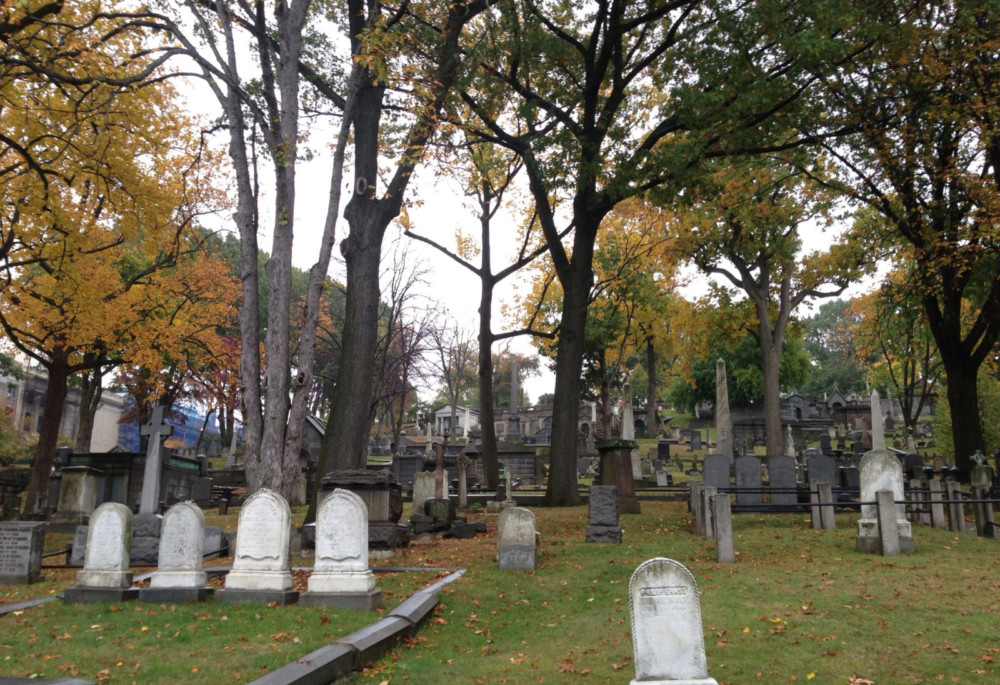Trinity Cemetery / Revolutionary War Marker
West 153rd Street
James Renwick, Jr., 1843; re-design: Calvert Vaux, 1881
National Register of Historic Places
West 155th Street & Broadway
Sons of the Revolution in the State of New York, 1901
The steep slope and bucolic landscape of Trinity Cemetery provide hints of Manhattan’s natural topography. One of the few active burial grounds in Manhattan, the cemetery belongs to Trinity Church, whose graveyard in lower Manhattan was filled to capacity by the early 19th century, thus precipitating the 1841 purchase of a large swath of land from Richard F. Carman’s uptown property. In addition to John James Audubon, other notable residents include John Jacob Astor, Alfred Tennyson Dickens (son of Charles Dickens and godson of Alfred, Lord Tennyson) and Mayor Edward I. Koch. The cemetery proved popular not only as a burial ground, but as a setting for leisurely strolling. A suspension bridge, designed by Vaux, Withers & Co. in 1872, once crossed Broadway to link the cemetery’s eastern and western sections, but was demolished in 1911 to make way for the Church of the Intercession (site 2). In 1901, a plaque was erected on the cemetery’s exterior wall to mark the site of a line of defense drawn by the Continental Army in September of 1776. After the British defeated the American troops that September in the Battle of Harlem Heights, Washington’s army erected this line of defense just south of Fort Washington, the last stronghold in Manhattan under American control. After Washington evacuated most of his army to New Jersey, roughly 2,800 men were left to defend Fort Washington. The British attacked, surrounding the Continental Army until they surrendered, leaving New York under British control for the war’s duration. Another plaque, located on “the Mound” in the cemetery’s eastern section, was erected in 1920 to mark the site of “some of the fiercest fighting” of the battle.
